- News
- Reviews
- Bikes
- Accessories
- Accessories - misc
- Computer mounts
- Bags
- Bar ends
- Bike bags & cases
- Bottle cages
- Bottles
- Cameras
- Car racks
- Child seats
- Computers
- Glasses
- GPS units
- Helmets
- Lights - front
- Lights - rear
- Lights - sets
- Locks
- Mirrors
- Mudguards
- Racks
- Pumps & CO2 inflators
- Puncture kits
- Reflectives
- Smart watches
- Stands and racks
- Trailers
- Clothing
- Components
- Bar tape & grips
- Bottom brackets
- Brake & gear cables
- Brake & STI levers
- Brake pads & spares
- Brakes
- Cassettes & freewheels
- Chains
- Chainsets & chainrings
- Derailleurs - front
- Derailleurs - rear
- Forks
- Gear levers & shifters
- Groupsets
- Handlebars & extensions
- Headsets
- Hubs
- Inner tubes
- Pedals
- Quick releases & skewers
- Saddles
- Seatposts
- Stems
- Wheels
- Tyres
- Health, fitness and nutrition
- Tools and workshop
- Miscellaneous
- Buyers Guides
- Features
- Forum
- Recommends
- Podcast
feature
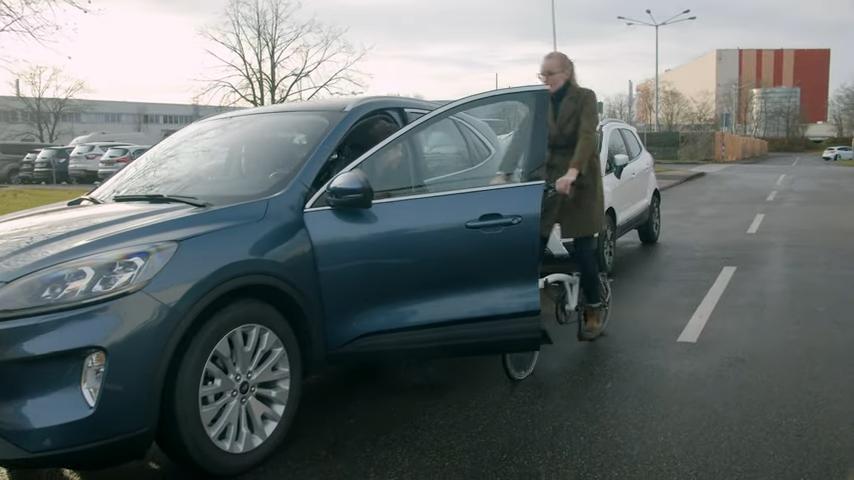 Ford Exit Warning (via YouTube)
Ford Exit Warning (via YouTube)Dooring – What is it, what does the law say and what should you do if it happens to you while cycling?
It’s something that’s happened to far too many cyclists (including four-time Tour de France champion Chris Froome), and many cyclists dread it will happen to them, but it's also a hazard that a large number of people who ride bikes may be unaware of until it’s too late – a driver or vehicle passenger opening a car door as they approach, in some cases with very serious or even fatal consequences. In fact, it’s so commonplace that it is generally referred to with just one word, “dooring.”
So: what does the law say about dooring, is there anything you can do to mitigate the risks, and what should you do if you're unfortunate enough to be 'doored'? Read on to find out.
> Dashcam captures frightening moment London cyclist was doored by van driver
According to Cycling UK, within Great Britain more than 500 cyclist casualties a year are due to dooring – although the charity adds that with many such incidents going unreported, the true figure is likely to be much higher.
While the majority of cases result in the cyclist sustaining minor injuries, in some instances a driver or passenger opening a car door without checking to see if a rider is approaching can result in very serious injury or death.
It was one such tragedy in 2017 that led to Cycling UK joining the victim’s family to launch a campaign on the issue, calling on vehicle occupants to use what is known as the Dutch Reach technique, explained in further detail below.
Art teacher Sam Boulton was riding past Leicester railway station on his 26th birthday when the passenger of a taxi parked on a double yellow line opened the door as he approached.
As is the case with a number of fatalities due to dooring that we have seen over the years, it wasn’t the collision with the vehicle’s door itself that led to his death.
Rather, it was the fact that he was thrown into the path of a van, the intoxicated driver of which fled the scene afterwards, and who subsequently received a suspended jail sentence after pleading guilty to failure to stop and driving while over the legal limit for alcohol.
The legal position
Regulation 105 of The Road Vehicles (Construction and Use) Regulations 1986 says:
No person shall open, or cause or permit to be opened, any door of a vehicle on a road so as to injure or endanger any person.
The maximum penalty for doing so is a fine of £1,000 – though it should be pointed out that following Mr Boulton’s death, the taxi passenger who opened the door and who pleaded guilty was fined just £80. The driver of the vehicle, who denied committing the offence, was fined £300, and subsequently made an unsuccessful appeal against his conviction.
Cycling UK has campaigned for a specific offence of causing serious injury or death by car dooring to be introduced, punishable by stiffer penalties than currently apply. The charity's head of campaigns, Duncan Dollimore, said: “A maximum £1,000 fine is inadequate for entirely avoidable behaviour which can kill.”
While there is little prospect of such an offence entering the statute books any time soon, campaigning efforts by Cycling UK and others have resulted in the problem being directly addressed in the updated version of the Highway Code, published in January 2022.
> The Highway Code for cyclists in Great Britain — everything you need to know
What is The Dutch Reach?
Rule 239 of the Highway Code, which covers parking, now incorporates what is known as ‘The Dutch Reach’, a technique taught to learner drivers in the Netherlands that aims to minimise the risk of a dooring happening, with the official guidance to GB motorists now including the wording:
You MUST ensure you do not hit anyone when you open your door. Check for cyclists or other traffic by looking all around and using your mirrors
Where you are able to do so, you should open the door using your hand on the opposite side to the door you are opening; for example, use your left hand to open a door on your right-hand side. This will make you turn your head to look over your shoulder. You are then more likely to avoid causing injury to cyclists or motorcyclists passing you on the road, or to people on the pavement.
Introducing the change, the Department for Transport (DfT) said on its website:
The code recommends a new technique when leaving vehicles. It’s sometimes called the ‘Dutch Reach’.
Where people driving or passengers in a vehicle are able to do so, they should open the door using their hand on the opposite side to the door they are opening. For example, using their left hand to open a door on their right-hand side.
This will make them turn their head to look over their shoulder behind them. They’re then less likely to cause injury to:
people cycling or riding a motorcycle passing on the road
people on the pavement.
As we have reported here on road.cc, however, concerns have been raised that the various changes to the Highway Code implemented last year and primarily aimed at protecting vulnerable road users, including cyclists, have not been adequately communicated to motorists by the government. In some cases, they have been at best misunderstood or even wilfully misinterpreted by some elements of the media.
> Highway Code changes one year on: Confusion in communication has created the perfect storm
The change to the Highway Code, by the way, came into effect a little more than five years after one of the most high-profile instances of dooring we have covered on road.cc, when Chris Grayling, at the time the Secratary of State for Transport, opened the door of the ministerial limousine he had been travelling in and knocked a cyclist off his bike in Parliament Square.
Tips to minimise the chances of being doored
As a cyclist, it is of course impossible to prevent someone in a parked motor vehicle from opening a door without checking that it is safe to do so – although there is one thing in particular that you can do to minimise the chances of you crashing into one should that happen, and that relates to your road position.
We explain in our feature examining the rules of the road as they apply to cyclists how the Highway Code now advises cyclists to leave at least 1 metre of space when passing parked cars.
To novice cyclists worried about drivers overtaking them too closely, that may seem counter-intuitive in terms of their own safety, and in particular in cases where a council has actually painted a cycle lane in what is often referred to as the ‘door zone’ – but it is something that is taught by cycling instructors, with many local authorities providing training for free, and means that if someone does open the door of a parked vehicle, at least you won’t be struck by it.
To give a personal example, the closest I’ve come to being doored happened just last month, as I was riding along South Africa Road by Queens Park Rangers’ Loftus Road stadium in West London.
As usual, I’d ensured there was enough of a gap to my left, but even so, when the door of a car that I’d noticed moving into a parking space ahead of me was flung upon, I instinctively swerved to the right. Luckily, there were no vehicles passing me at the time.
In some cases, it’s not possible to give that metre of room – say you’re filtering up a row of slow-moving or stopped traffic to your right, with a line of parked vehicles on your left. There are, though, a couple of things you can do to perhaps reduce the chances of a dooring happening.
Scan ahead for drivers who are parking up, and reduce your speed and be ready to use your brakes as you get closer to that vehicle, in case a door is suddenly thrown open. Where traffic is stationary to your right, and especially when you are close to busy areas such as transport hubs including railway stations, also be vigilant for passengers opening doors as they take the opportunity to exit the vehicle.
What to do if you are doored
For obvious reasons, this section only applies to those situations in which you may have sustained a relatively minor injury not requiring a hospital stay, or even no injury at all. In the case of the latter, it's understandable that emotions may be running high. You've just been put in a potentially life-threatening situation, after all.
It may be worth politely reminding the driver or passenger that your safety is their responsibility, and even mention looking up The Dutch Reach to them – however, not everyone is going to be reasonable or receptive to this kind of approach. Sometimes it's best to leave the dishing out of advice with the police or a judge, and say as little as possible while ensuring you have the offender's details, and ideally the details of some witnesses.
Where the only damage is to your bike, and/or their vehicle, Metropolitan Police Service guidance, as set out on its website, and reflecting the law nationwide includes that:
You don't need to report a collision to the police if you've exchanged details, nobody was injured and there are no allegations of driving offences.
You must report the collision to the police if you were unable to exchange details at the scene, if anyone was injured, or if you suspect that the other person may have committed a driving offence.
Given that opening or permitting a vehicle door to be opened so as to cause injury to another is an offence, clearly it should be reported – although in the absence of injury, it’s probably fair to say that police would not investigate other than in cases in which video footage is available. The driver of the vehicle in this incident in Leeds, for example, was charged with a public order offence after it was captured on camera, even though no collision took place; it is worth noting however, that in this case, the opening of the car door into the cyclist’s path appears to have been a deliberate act on the motorist’s part, and sadly not the only such episode we have covered.
But, if you have suffered injury – and don’t forget that what may seem something fairly trivial at a time the adrenaline is pumping may well turn out to be more serious once that rush has subsided – do take down the driver’s details, as well as those of any witnesses, and if you use an action camera, make sure you keep the footage and submit it with any report to the police.
Also, provide your details to the motorist, and if you belong to an organisation such as Cycling UK, British Cycling, your local cycling campaign group or any other official organisation, it may be worth mentioning the insurance they provide to help calm down the driver if their vehicle has been damaged in the crash, even if it clearly wasn’t your fault (bear in mind too that motor insurers advise their policyholders never to admit liability … even if it was clearly down to their actions).
While household insurance policies will also cover your legal liability to third parties including while riding a bike, signing up to a membership organisation such as those mentioned in the previous paragraph will also in most cases give you access to free legal advice – something that could prove invaluable following a dooring incident.
The motor industry turns to technology
Vehicle manufacturers are also in some cases using technology to try and prevent such incidents from happening.
In December 2023, Ford announced that its new, top-of-the range Transit Custom vans will be equipped with what it calls an Exit Warning system, first unveiled in 2020 when it was being trialled, and triggered when other road users approach a parked vehicle at speeds of more than 7kph (that speed was chosen to avoid false alarms).
Ford claims that the technology – which operates on both sides of the vehicle, but can be overridden by vehicle occupants in emergency situations – will also prove useful in situations including ones where a cyclist may be riding along a shared-use path on the footway and the passenger tries to open the door without looking.
Other manufacturers too are developing anti-dooring technology – in 2017 Audi said that its A8 model, already equipped with an exit warning system, would now provide a further safety feature in actually locking the vehicle’s doors and preventing them from being opened should sensors detect a cyclist approaching from behind.
> New Audi A8 automatically locks doors if there’s a chance a cyclist might be doored
While in some cases, harnessing technology to avoid collisions between vulnerable road users and motorists may require input from both parties – one that tends to do the rounds every so often involves bicycles being fitted with beacons to warn drivers of vehicles able to identify the signal that a cyclist is nearby – initiatives such as these require no action on the bike rider’s part and may as a result be more of a viable contribution to road safety in real-life situations.
Stay safe and keep out of the door zone
Back to my recent close call, and as I passed the vehicle and its open door, the driver yelled out the classic, “Sorry, mate, I didn’t see you!” – despite me wearing high-viz with reflective tape on a well-lit street, and riding a cargo bike with lights on and a rather large and very visible bin on the front.
One can only hope he will learn from the near miss and be more watchful for cyclists in future –although perhaps, expecting him to browse through the current version of the Highway Code and familiarise himself with the Dutch Reach technique is too much to expect, unless the DfT finally launches an effective campaign to publicise it.
In the meantime, ride safely. Keep away from the door zone, even if the cycle lane markings suggest that is exactly where you should be cycling.
Simon joined road.cc as news editor in 2009 and is now the site’s community editor, acting as a link between the team producing the content and our readers. A law and languages graduate, published translator and former retail analyst, he has reported on issues as diverse as cycling-related court cases, anti-doping investigations, the latest developments in the bike industry and the sport’s biggest races. Now back in London full-time after 15 years living in Oxford and Cambridge, he loves cycling along the Thames but misses having his former riding buddy, Elodie the miniature schnauzer, in the basket in front of him.
Latest Comments
- lesterama 9 min 28 sec ago
It looks a lot less ugly than the previous version, thankfully. Perhaps they've had hints of thought towards aesthetics.
- mitsky 17 sec ago
Even though this "law" is quite ridiculous, I would suggest a sense of proportionality be applied....
- festina 15 min 39 sec ago
Talented but pointless (no pun intended). With art like this you could have just taken a photo. It's like asking all pro riders to ride on the...
- Simon E 41 min 51 sec ago
£115 per litre sounds expensive, though if an application lasts twice as long as Green Oil then that is worthwhile (in practical terms as well as...
- ChasP 1 hour 29 min ago
The descriptions of articles from China are often inaccurate due to translation. They're not going to be made from natural rubber, they will be...
- dreamlx10 2 hours 8 min ago
Lest we forget
- brooksby 3 hours 1 min ago
Local papers is a bit of a misnomer: most of them don't even have local offices eg IIRC there's one desk which covers everything south of...
- marmotte27 4 hours 12 min ago
Laurent Fignon died 14 years ago, I doubt he ever compared Pogacar to anything or -one.
- Matsea 4 hours 19 min ago
What's a good camera that is not expensive for recording motorists behaviour for a cyclists safety?
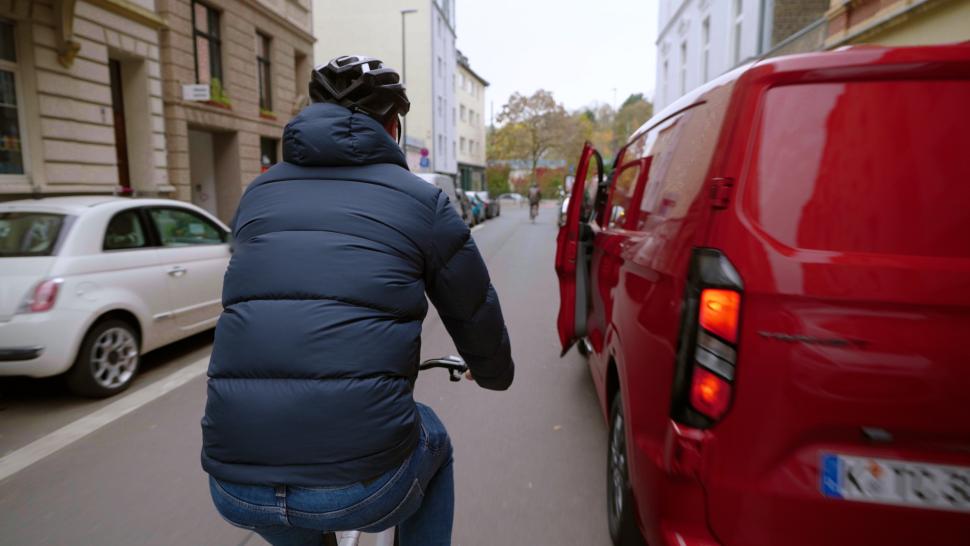

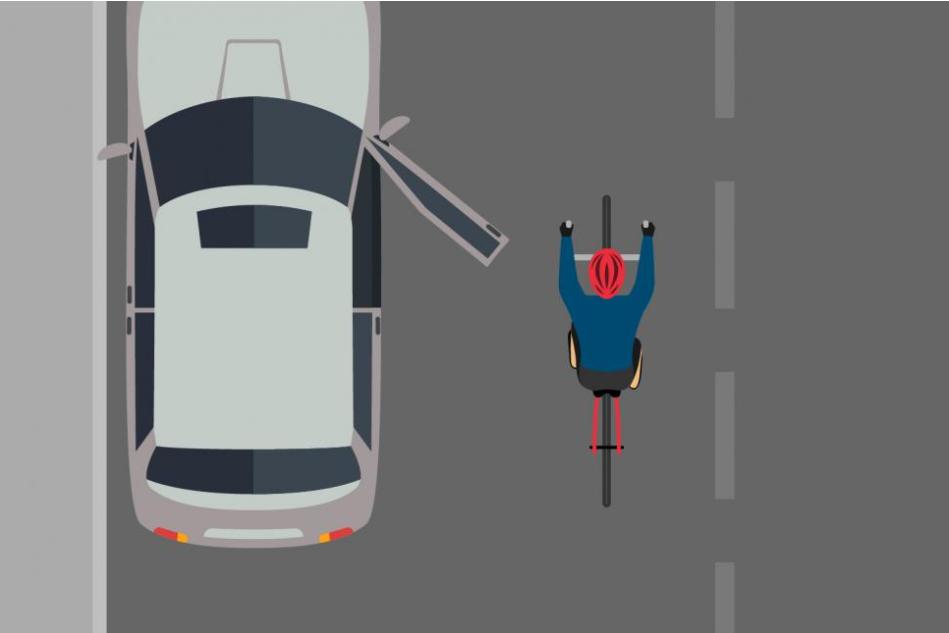
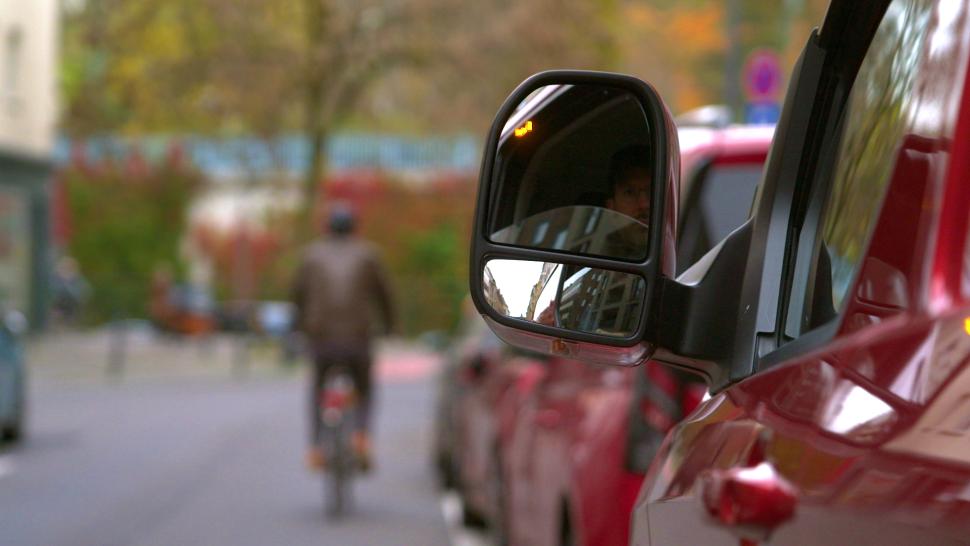
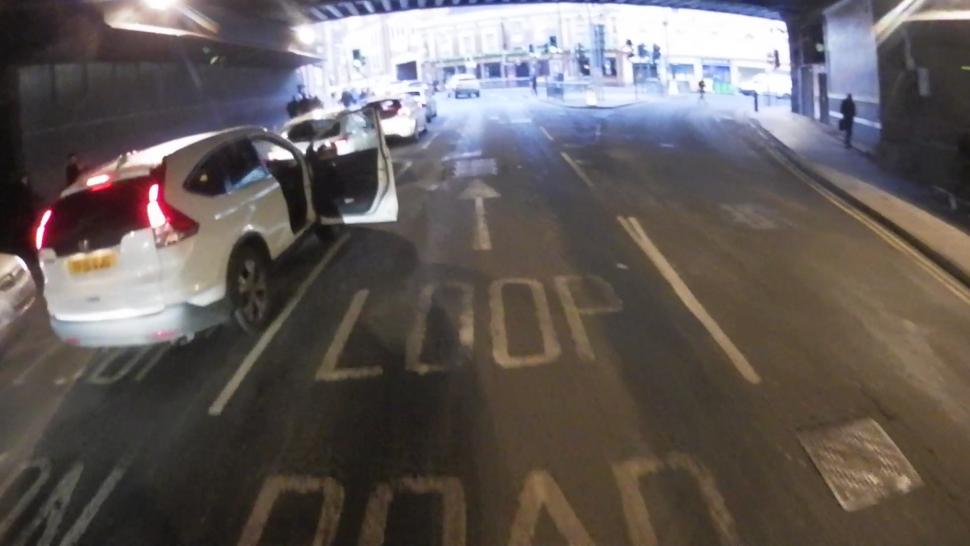
Add new comment
7 comments
I've been cycling for almost 70yrs and never been 'doored'. If I had it would have been my own fault for riding closer than necessary to another vehicle
Victim victim blaming.
Touch wood in over 160,000 miles on the bike I've never been doored, but folk do say I ride a bit wide. Do you think there's a relationship
It can be really nasty when it happens. I was doored once while filtering through heavy traffic stuck in a jam. The driver just decided to get out of her car. My hand was very badly bruised where it hit the edge of the door and it hurt for weeks. I should ahve reported it but didn't. The driver got a full flow of Anglo Saxon language, which on reflection probably did little in the long term to improve driving skills.
I disagree, the police should always be contacted. I've been doored countless times, and I never used to get the police involved, but for the past few years I have done so. They don't always come out, but they do give me a case number. I typically report it as driving without due care and attention, which is a criminal offence, even if they are stationary at the time (common misconception). It rarely goes further than that, and has only resulted in punishment twice, but I like to think that involving the police teaches the inconsiderate drivers a lesson.
Unreported means the absence of data suggests the absence of attention.
Always report preferably with video evidence as a close pass is not the only Near Miss of The Day that has real danger because physics.
.
Nice one, Ren Dell.
.